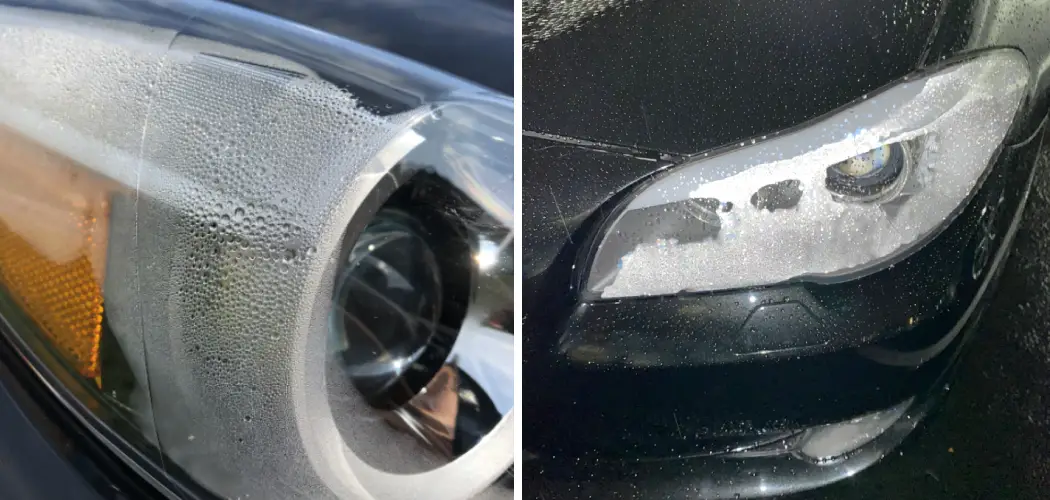Do your car headlights look foggy and unclear? You might be experiencing condensation on the inside of the lenses. This isn’t an uncommon issue, because warm air mixed with cold temperatures can cause water droplets to form in between the lens walls. If left alone, this condensation can create a hazardous visibility situation while you’re driving at night or during bad weather. Thankfully, there are some ways to correct this problem that don’t require professional assistance.
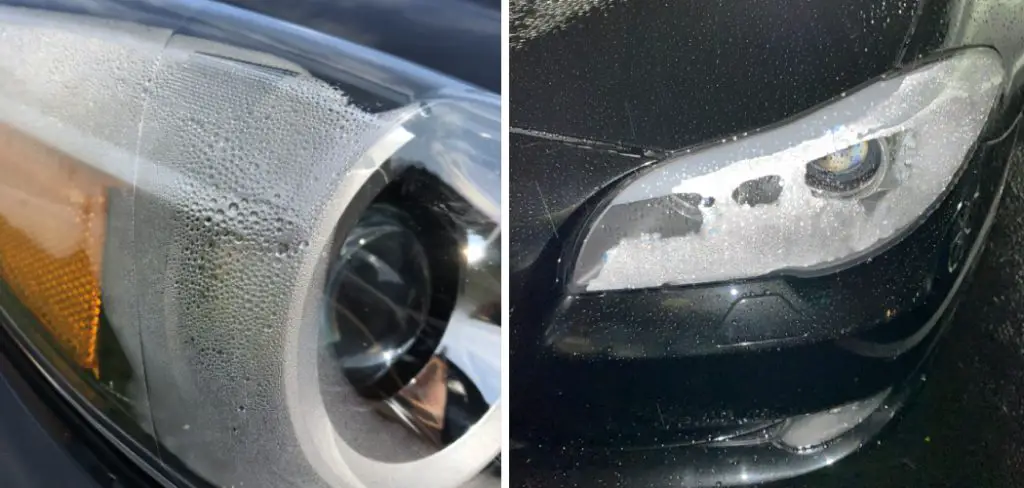
Seeing condensation form inside your vehicle’s headlights can be a frustrating experience for car owners, and unfortunately, it is also an issue that many drivers are all too familiar with. If you’re finding yourself struggling with fogged or dampened lights while driving at night, don’t worry! There are plenty of steps that you can take in order to treat the issue correctly.
Here we will provide step-by-step instructions on how to fix condensation in headlights so that safe navigation through the dark is no longer hindered by moisture buildup. Read on to learn more about treating headlight condensation and ensuring better visibility during nighttime drives!
What Causes Condensation in Headlights?
1. Improperly Sealed Headlights
One of the main reasons why condensation can form in headlights is due to improper sealing. Rubber seals around the headlight lens may not have been properly fitted, or may have become dry and brittle over time, which can allow moisture to get inside the headlight assembly.
2. Excessive Moisture
Another factor that causes condensation inside headlights is excessive moisture buildup on and around the headlights. This can be caused by humidity or heavy rainfall, leading to water droplets collecting on the headlight lenses and seeping inside through any small cracks or gaps.
3. Temperature Fluctuations
Finally, temperature fluctuations can also lead to condensation in headlights. When temperatures drop significantly at night, they cause moisture to form inside the headlight assembly due to the difference in temperature.
12 Tips on How to Fix Condensation in Headlights
Now that you know what causes condensation in headlights, let’s take a look at how to fix it.
1. Apply Weatherproof Sealant
This is one of the most popular methods for treating condensation. Apply a weatherproof sealant to the headlight lens and headlight housing to prevent moisture from entering again. Also you have to make sure that you have applied the sealant properly.
2. Use Silica Gel Packs
To help prevent condensation in your headlights, use silica gel packs to absorb any moisture already present. Place a few of them in the headlight housing and leave them until they are completely dried out before replacing them.
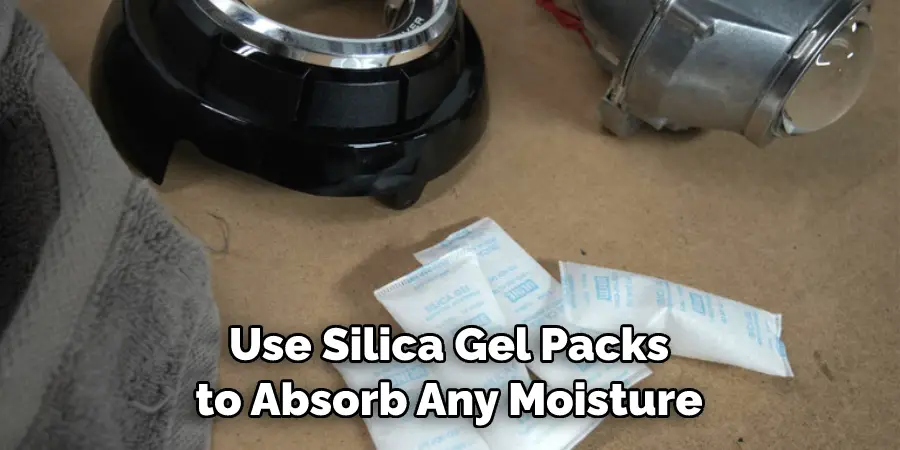
3. Clean Headlights Regularly
Regularly cleaning the headlights, including the lenses and housing, is key to preventing condensation from occurring. Use a mild detergent and water solution or an automotive headlight cleaner meant specifically for use on headlights.
4. Check Headlight Seals
The seals of your headlights should be checked regularly for signs of wear and tear as this can cause moisture to enter the headlight housings. If the seals are damaged, they should be replaced as soon as possible.
5. Install Seam Sealer Tape
In order to avoid condensation in your headlight housing, install seam sealer tape around the edges of the headlight housing. This will help to keep moisture out and prevent it from building up inside. Also you have to make sure that the tape is installed properly.
6. Drill Small Holes Over Headlight
Drilling a few small holes over your headlight will help to keep condensation from forming inside. This will allow any moisture to escape and not accumulate in your headlights. You have to be careful with the size of the holes and make sure they are small enough not to affect visibility.
7. Use an Electric Fan
If your headlights have already become foggy or cloudy due to condensation, use a small electric fan to blow air over them and help remove some of the moisture. Be sure to keep the fan at least four feet away from headlight lenses and never direct the fan right onto the headlights.
8. Install a Headlight Ventilation System
A headlight ventilation system will help keep moisture from accumulating inside your headlight housings. This system is typically designed to draw air out of the housing when it’s hot and release it when it’s cold, helping to prevent condensation from forming.
9. Use a Dehumidifier
If the humidity in your garage or vehicle is too high, use a dehumidifier to reduce the amount of moisture in the air and help prevent condensation from forming in the headlights. Be sure to change out the water reservoir regularly and check for any signs of mold or mildew.
10. Apply Anti-Fog Spray
Make sure to regularly apply anti-fog spray to the insides of your headlights to help prevent condensation from forming. This type of product works by creating an invisible layer between the lens and the headlight housing, which helps keep moisture out.
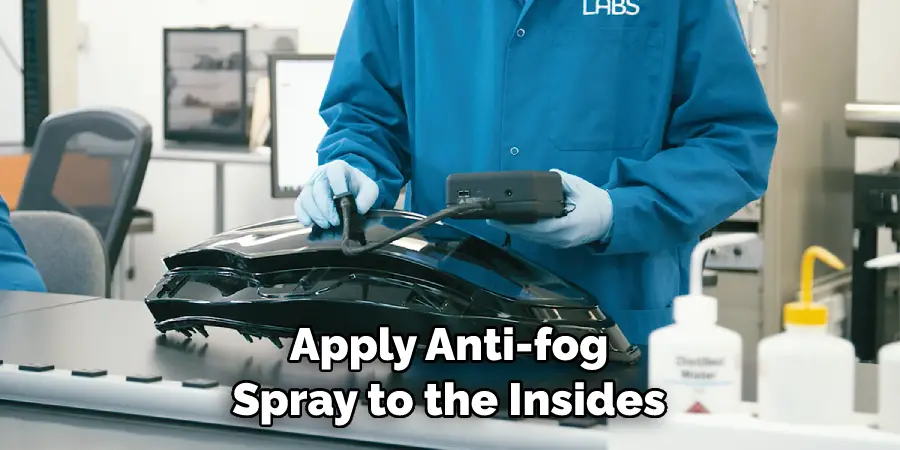
11. Keep Headlights Covered When Not in Use
If you’re not driving your vehicle for an extended period of time, make sure to keep the headlights covered in order to prevent condensation from forming. This can be done with a simple headlight cover or an automotive-grade plastic wrap.
12. Replace Headlights When Necessary
If all else fails and you can’t seem to get rid of the condensation in your headlights, the best course of action is to replace them. This will ensure that there’s no more moisture present, allowing you to enjoy clear, unobstructed visibility once again.
By following these tips to fix condensation in headlights, you can help keep your vehicle’s headlight lenses fog-free and ensure that you have optimal visibility while driving at night. In addition, you can also help prevent costly repairs and possible safety issues by keeping your headlights in good condition. With proper care and maintenance, condensation should never be an issue for your vehicle’s headlights.
Frequently Asked Questions
What Precautions Should I Take Before Repairing Condensation in Headlights?
Before repairing condensation in headlights, it is important to take certain precautions. First, ensure you are wearing protective gear such as safety glasses and gloves. Second, make sure the area surrounding your vehicle is well-ventilated; this will reduce the chance of contact with toxic fumes. Finally, unplug any electrical wires leading to the lights before beginning repairs.
How Can I Determine If I Have Condensation in My Headlights?
If you notice that your headlights are foggy or hazy, this may be a sign of condensation. Another way to tell if you have condensation is by inspecting the interior of the headlights. If there is water droplets present, this indicates condensation.
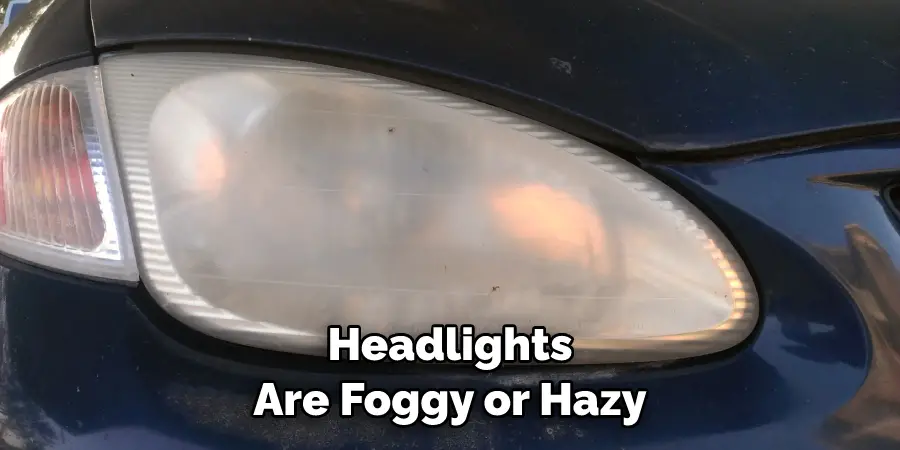
What Are Some Solutions to Fix Condensation in Headlights?
There are several solutions you can use to fix condensation in headlights. First, you can try using a desiccant product such as silica gel packs or corn starch to absorb the moisture. Second, you can use a sealant to waterproof your headlights and block moisture from entering. Lastly, you can replace the headlight assembly if the condensation is too severe and it cannot be repaired.
What Is the Best Way to Prevent Condensation in Headlights?
The best way to prevent condensation in headlights is by regularly inspecting your vehicle’s lights and making sure they are sealed correctly. Additionally, make sure any interior moisture is removed by using a desiccant product. Finally, regularly cleaning your vehicle’s headlights can help reduce the chances of condensation forming.
Is It Safe to Drive With Condensation in My Headlights?
No, it is not safe to drive with condensation in your headlights. Condensation affects how much light is emitted from the headlight, which reduces your visibility while driving. Therefore, it is important to repair the condensation as soon as possible for safety reasons.
What Maintenance Is Needed for Headlights After Repairing Condensation?
After repairing condensation in headlights, it is recommended to check the lights regularly for any signs of moisture or damage. Additionally, you should use a sealant product periodically to waterproof the headlights and ensure they are properly sealed. Lastly, always make sure your vehicle’s lights are clean to reduce condensation from forming.
What Is the Warranty on Repaired Headlights?
The warranty for repaired headlights will depend on the specific repair shop or product you use. Therefore, it is important to check with the manufacturer or repair shop to find out more information about the warranty before beginning any repairs.
Do I Need Professional Help to Fix Condensation in Headlights?
Depending on the severity of the condensation, it may be possible to fix it yourself. However, if you are not confident in your ability to repair headlights, then it is recommended that you seek professional help. A professional mechanic can diagnose the issue and provide a solution that is both safe and effective.

Overall, condensation in headlights can be an issue that needs to be addressed quickly for safety reasons. Knowing how to properly diagnose, repair, and prevent condensation can help keep your vehicle’s lights working correctly and reduce the chance of any future issues.
Conclusion
Finally, with the simple steps outlined above, anyone should be able to fix condensation in headlights. With routine maintenance inspections of a car’s headlights, one should be able to catch and treat any condensation before it causes more serious and expensive damage.
If you follow these steps on how to fix condensation in headlights correctly and are mindful of the warning signs that your headlights may need attention soon, you can save yourself from significant costs in the future! What’s more, if done routinely taking minutes out of your day, you may never have to replace or repair your headlight lenses due to fogging. The security you will have when driving at night knowing you have a reliable headlight is invaluable!
